Help! I’m a Coach and Want to Teach the Mental Game – Part III
If you’re a soccer coach, chances are you religiously keep up with the latest drills and methods to improve the technical and tactical aspects of your team.
You no doubt study the latest trends in strategy, formations, and styles of play to stay one step ahead of the competition on the pitch.
But if you’re like most coaches, you probably don’t know where to turn for help on the mental game.
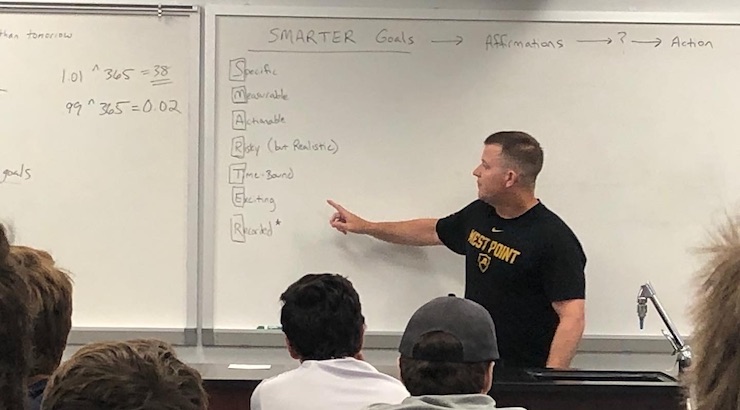
Read: TEACHING THE MENTAL SIDE OF YOUTH SOCCER
Even though U.S. Soccer has designated the psychological component as the 4th pillar of player development, it is the one that is the most difficult for coaches to develop and the pillar that has the fewest resources for coaches and players.
And yet, that psychological component might be the most important pillar of development, especially for players hoping to compete at an elite level.
In an article published last year on how the U.S. Women’s National Team was developing their mental game, the author highlighted this gap: “Ask any coach if mental training is important and almost all will say ‘yes.’ Ask if they’re actually providing any mental training and the answer is almost always ‘no.’”
Who trains coaches on the Mental Side of the Game?
But don’t panic. Soccer Today has you covered with a series of articles for coaches looking to improve the mental toughness of their teams.
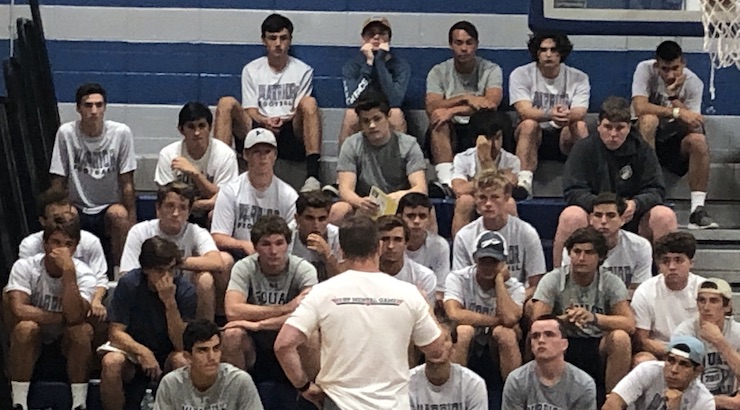
In Part I on Teaching the Mental Side of the Game, I discussed the mind-body connection, shared tips on where to start, and suggested how coaches get buy-in from their teams on the mental game.
In Part II of the series, I provide five activities that every coach should have in their mental game toolkit.
Here in Part III, the last in the series on Teaching the Mental Side of the Game, I give coaches an introduction to visualization and pre-competition routines that are guaranteed to get your team playing at their best when it matters the most.
Soccer Players: Get Hyped (or Not)
You don’t have to be a sports psychologist to appreciate that your players aren’t robots. They have their own personalities, mannerisms, and idiosyncrasies. Players also differ in how they react under pressure.
Consider two players with equal physical ability and talent.
Player A naturally gravitates towards making the big play in the game. The bigger the moment, the better this player seems to perform.
Player B seems to underperform in big moments. This player performs their best when things are normal with not much on the line. As soon as some pressure is applied, however, this player’s performance suffers.
The inverted-U theory in psychology (also known as the Yerkes-Dodson law) suggests there’s a predictable relationship between pressure and performance
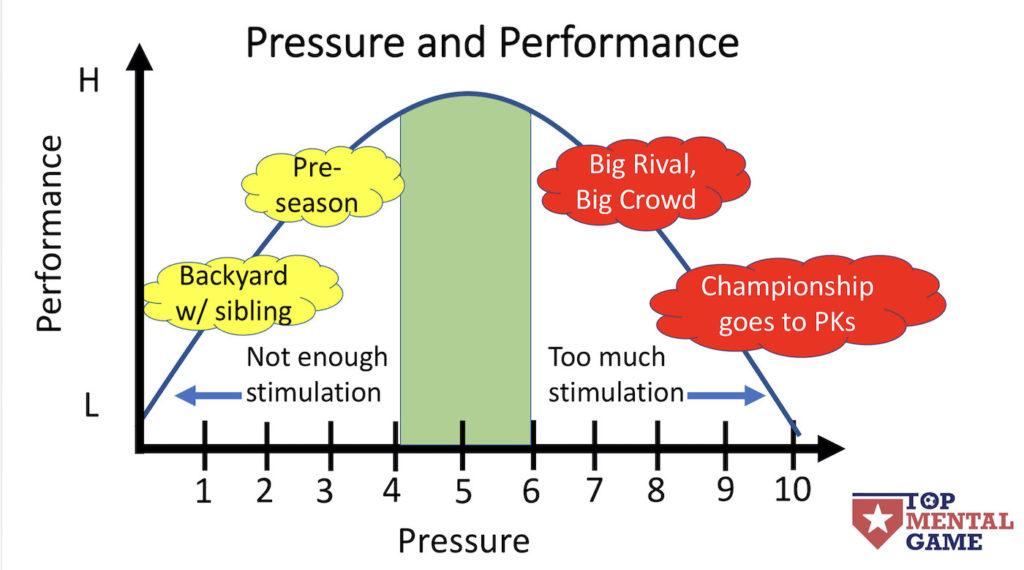
(see chart entitled “Pressure and Performance”).
Read: HELPING YOUTH SOCCER PLAYERS BUILD CONFIDENCE AFTER COVID
At low levels of stress and pressure, most players are insufficiently stimulated. As a result, it’s difficult for them to “get up for the game,” and as a result, they’re likely to underperform. This could happen when players are goofing off with friends in the backyard or playing in a seemingly meaningless pre-season friendly against inferior competition.
At high levels of stress and pressure, some of those same players get overstimulated. They can’t function. They choke, play small, and the moment ultimately proves to be too big for them.
Somewhere in between those two extremes, there’s a sweet spot, a middle range of stress and pressure where we’re primed for peak performance. This Goldilocks-amount of stress and pressure is where we play at our absolute best.
This dynamic holds true for every player, but each player may have a different threshold for how much pressure is too much or too little. In other words, the same amount of pressure or stress may overstimulate one player but is not enough to get another player in their sweet spot.
Coaches can learn more about each player’s relationship with stress and pressure by asking what their hype-number is before every game. Using a scale of 0 to 10, ask your players how they’re feeling in pre-game.
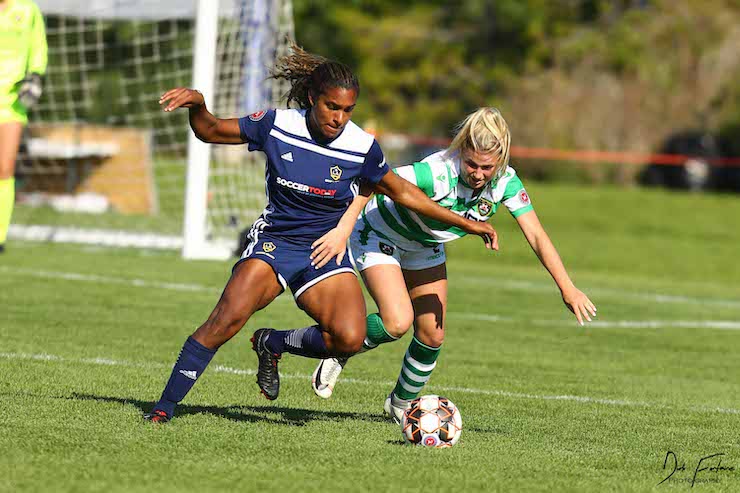
If players determine their hype numbers are at the low end of the scale, coaches know they need to inject some external stimulation to get them more hyped up. These players will require more stimulation in the form of stress and pressure to play at their best.
The importance of Self-Talk
If players say their hype numbers are at the high end of the scale, coaches need to reduce their stress and pressure. This can be done through deep breathing, self-talk, a gratitude exercise, and visualization/imagery exercises.
Once coaches learn more about their players, they can take active steps to get their team in the right frame of mind. When making room assignments on the road, it’s best to pair up players with similar hype numbers. You don’t want a player who thrives off of increased amounts of stimulation caused by pressure and stress to be rooming with a player who is easily over-stimulated.

If coaches notice multiple players reporting higher-than-normal hype numbers before a game, they should consider bringing some levity to the situation or de-escalating the tension in their pre-game speech.
If they notice lower-than-normal hype numbers, coaches might want to ramp up their team’s sense of urgency and get the team more amped up.
This technique gives players a voice as to how they’re feeling, and it gives the coach a better understanding of the team’s psyche in different situations, not to mention more information about individual players. It could even dictate what substitutions coaches make late in pressure-filled games and when it looks like games will go to PKs.
Visualization and Imagery Exercises for Soccer Players
One of the most effective methods of changing a player’s physiological state is through visualization and imagery exercises. These exercises often include deliberate, deep breathing, and the use of all five senses to visualize specific movements, plays, and situations.
Visualization is a featured element in the training programs of elite performers in every field – athletes, neurosurgeons, and even special operators in our military.

How does visualization work?
First, our brains are poor at differentiating fantasy from reality. As proof, think about the last time you woke up from a nightmare. You most likely awoke in a panic and a cold sweat, even though you’re sleeping safely in your own bed. Watching a horror movie and desperately clutching the blanket or a loved one while sitting on your comfy couch is another example of this dynamic at play.
Visualizing our ideal athletic performance takes advantage of the brain’s inability to distinguish fantasy from reality.
In fact, when we visualize kicking a PK or making a diving save, the same neural pathways fire in the same sequence as if your body was actually performing those movements.
The more vivid the imagery one includes in their visualization, including the use of all five of our senses, the more the brain and body think it’s real.
The benefits of visualization are vast. Studies have shown that it improves confidence and self-esteem, increases reaction time, and helps create muscle memory. According to one study highlighted in Psychology Today, visualization can even increase muscle strength!
Even if you don’t understand all the medical intricacies of neuroplasticity, most soccer players and coaches can appreciate this next thought experiment.

Think of your worst play of all time and your greatest play.
Chances are several worst plays come readily to mind and you can describe them in much more vivid detail than your greatest play. Why? Because you’ve likely replayed them in your head thousands of times.
But your greatest play? If you’re like most people, you probably had to dig deep to even come up with one. We’re much more likely to highlight the gaffe, the negative critique, and the moment you failed than the time you came through in the big moment or received an awesome compliment.
Now, when do you think you are more likely to play at your optimal level? If you keep replaying that mistake over and over, or when you visualize yourself succeeding time and time again?
The best part about visualization is that you can do it anytime and anywhere. All you need is a vivid imagination and the discipline to do it on a consistent basis.
Pre-Competition Priming for Soccer Players
Perhaps the absolute best time to do a visualization exercise is just prior to competing.
Ask any coach at any level about their most frustrating part of practice, and they’ll likely tell you it’s the first 5 to 15 minutes. Whether they’re trying to get seasoned pros focused as they transition from the “real world” to the pitch or, sometimes equally as frustrating, doing the same for a pack of 10-year old players transitioning from student to athlete, coaches often dread those early parts of practice.
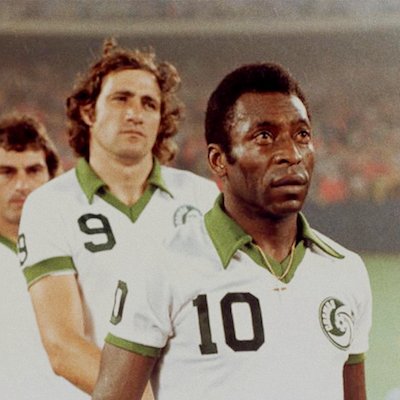
Pelé, one of soccer’s all-time greats, was known for his pre-game mental priming.
Before every match, Pelé would find a quiet part of the locker room and lay down with a towel over his head. Then he’d spend several minutes relaxing and getting into a trance-like state to get into an optimal mindset.
Pelé would relax his breathing and focus his thinking on playing soccer as a child and highlight reel memories of his past performances. Then, and most importantly, he would visualize the great plays he would make in the upcoming game.
While there are a number of visualization and imagery exercises you can do with your team, here is one that is quick, effective, and easy to do before competitions.
Gather your squad, space them out, and have them lay down on the ground but close enough where they can hear your voice.
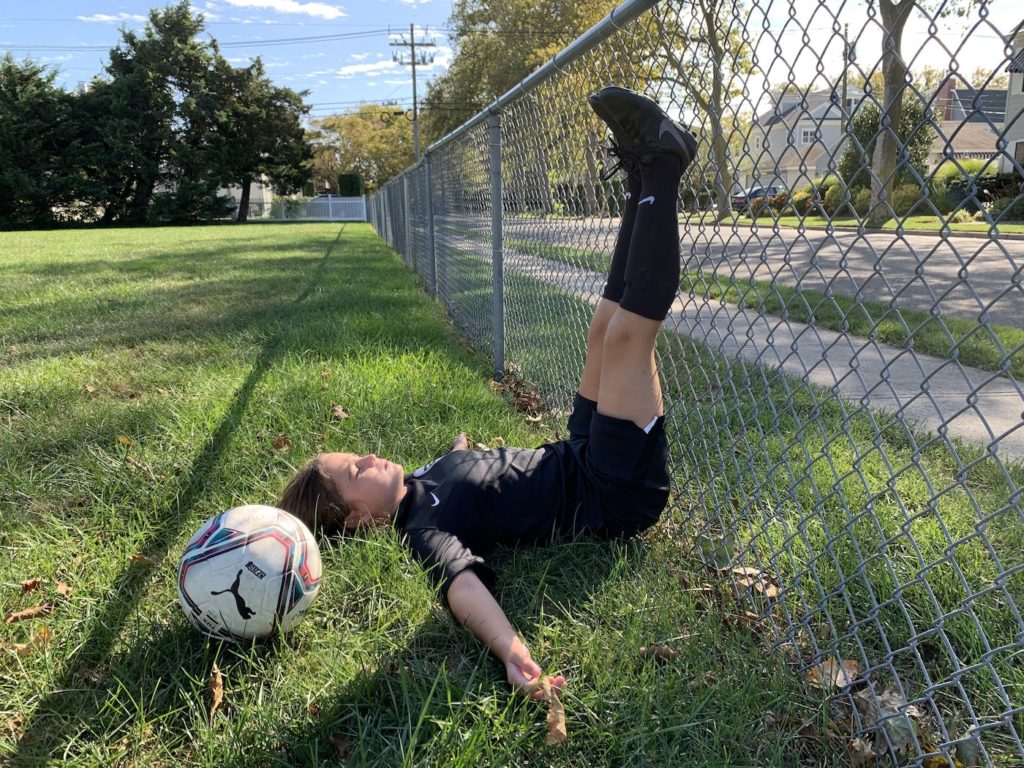
If you have access to a fence, a wall, or some bleachers, a great technique is to have them lay down flat with their feet up straight up against the fence/bleachers during this visualization. Those who do yoga will instantly recognize this pose. It is great for circulation, stretching out the hamstrings, and helps relieve any lower back issues.
Tell players to close their eyes, relax, and begin some mindful breathing from their bellies. Have them focus on nothing but their inhale and exhale. They should be inhaling through the nose for several seconds, holding that breath at the top for a moment or two, and exhaling through the mouth.
If you ever get confused, one colleague used this phrase which really stuck with me: “sniff the flower, and blow out the candle.”
For those familiar with meditation, some find it helpful to imagine breathing in positivity, strength, and confidence, while exhaling negativity, self-doubt, and whatever stresses they’re carrying around.
After several deep breaths using this technique, have them visualize several specific action-oriented aspects of their game for 30 seconds to one minute in complete silence. Have them focus on visualizing plays that involve vivid imagery in order to help “prime” their neural pathways and light up their central nervous systems.

Here are some examples of priming statements that would be excellent for visualization:
- I anticipate and explode with no hesitation to win every 50/50 ball
- I make every tackle on-time, under control, and with 100% commitment
- My first touch is perfect, and the ball does what I want it to do
- I strike my corners with power, precision, and pace
- I create scoring opportunities for my team with creative passes in space
- I bury every scoring opportunity in the back of the net with confidence and commitment
- My foot skills and quick decision-making allow me to dominate the middle of the field
- I finish every run with relentless hustle and anticipation
- My quickness and agility allow me to save goals that nobody else can
The whole routine should take no longer than four to five minutes, but the effects will be immediate and long-lasting. Like Pelé, your players will all be on the same sheet of music, relaxed, infused with confidence, laser focused, and ready to perform at their best.
Say goodbye to the infuriating first 15 minutes of a sluggish practice where players are shaking off the rust, and say hello to a consistent routine that incorporates breathing, visualization, and positive self-talk.
It is common for many coaches to employ the same stretching and warm-up routine before every practice and game. Coaches should seriously consider doing the same thing with a pre-competition routine for their team’s mental game as well.
If you train your team’s mental game like you do their physical game, you’ll see positive results, both on and off the pitch.
Read: MAKING THESE DAYS COUNT: SOCCER STAR JULIE FOUDY ON WHY MENTAL SKILLS COUNT and MAKING THESE COVID-19 DAYS COUNT WITH BRYAN PRICE & JULIE FOUDY






